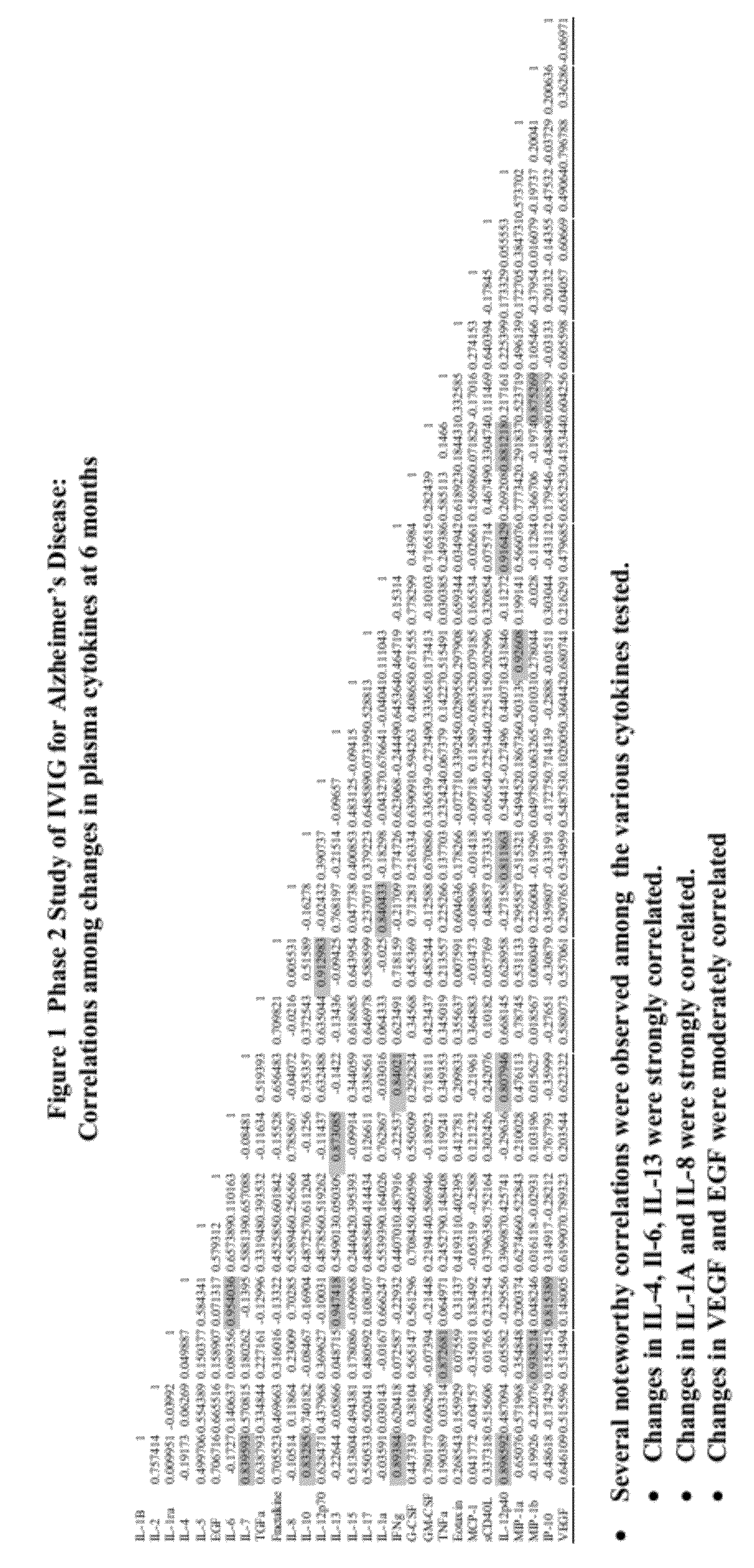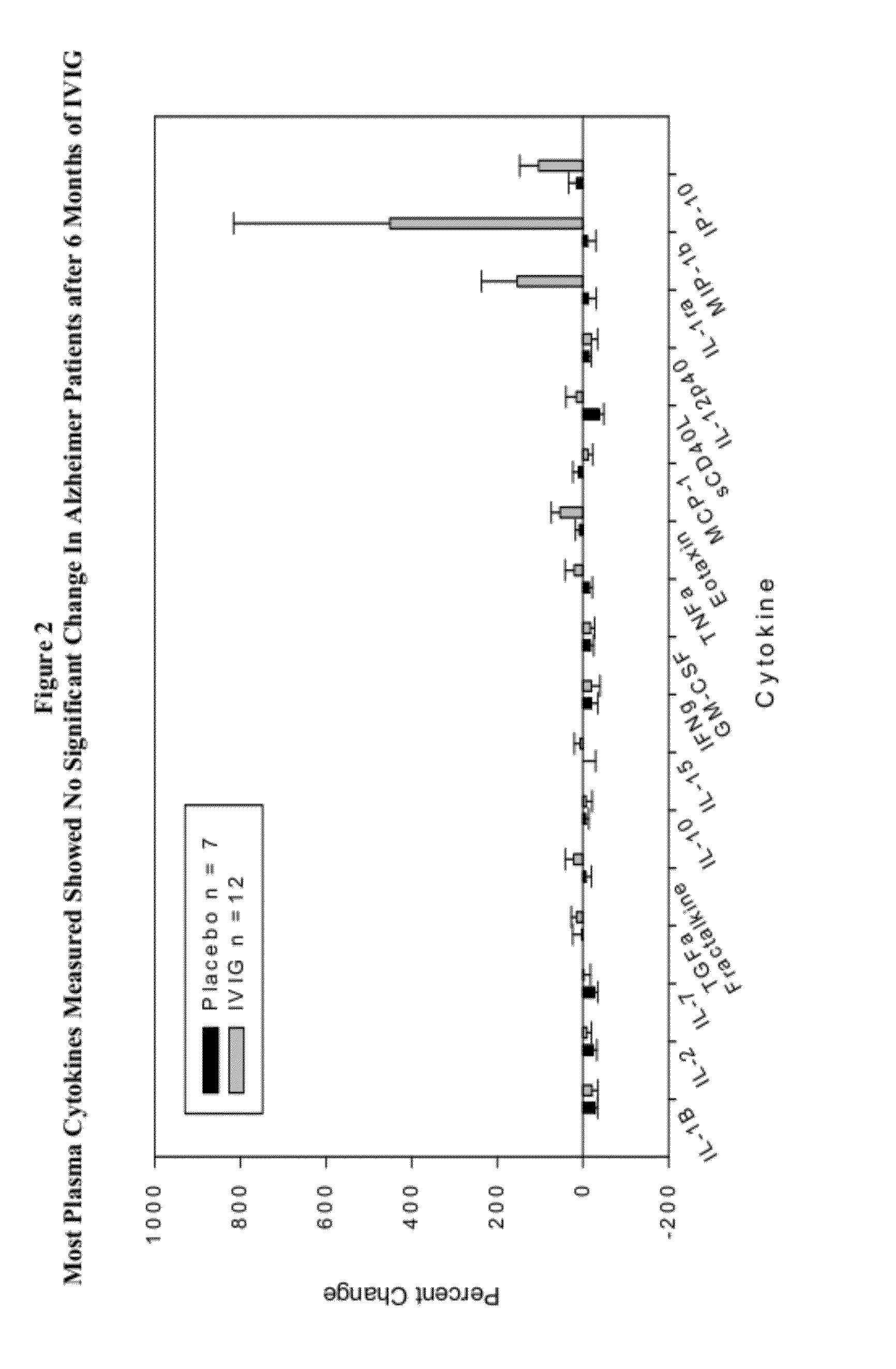Use of cytokine levels in intravenous immunoglobulin treatment of alzheimer's disease
a technology of immunoglobulin and cytokine, which is applied in the field of use of cytokine levels in intravenous immunoglobulin treatment of alzheimer's disease, can solve the problems of neurotransmitter level reduction, neurodegeneration, and neurodegeneration, and achieve the effects of reducing emotional stability, behavioral problems, and reducing neurotransmitter levels
- Summary
- Abstract
- Description
- Claims
- Application Information
AI Technical Summary
Benefits of technology
Problems solved by technology
Method used
Image
Examples
example 1
Plasma Cytokine Changes after Intravenous Immunoglobulin (IVIG) Treatment in Patients with Alzheimer's Disease (AD)
[0053]Objectives:
[0054](1) To explore changes in plasma cytokine levels associated with administration of IVIG to AD patients; (2) To correlate cytokine changes with clinical outcomes in a placebo-controlled, randomized Phase 2 study of Gammagard IVIG for mild to moderate AD.
[0055]Methods:
[0056]Plasma specimens were drawn from all subjects in the Phase 2 study of IVIG for mild to moderate AD. Plasma samples were drawn by venous phlebotomy prior to infusions at baseline and 6 months. The study was carried out with informed consent.
[0057]The blood draws were obtained prior to the first and last infusions to avoid the potentially confounding effects of the acute fluxes in cytokines that are reported to follow IVIG infustions.
[0058]Levels of selected cytokines and chemokines were analyzed using assays optimized for the Luminex platform. Appropriate standards and duplicate m...
PUM
| Property | Measurement | Unit |
|---|---|---|
| Time | aaaaa | aaaaa |
| Time | aaaaa | aaaaa |
| Time | aaaaa | aaaaa |
Abstract
Description
Claims
Application Information
 Login to View More
Login to View More - R&D
- Intellectual Property
- Life Sciences
- Materials
- Tech Scout
- Unparalleled Data Quality
- Higher Quality Content
- 60% Fewer Hallucinations
Browse by: Latest US Patents, China's latest patents, Technical Efficacy Thesaurus, Application Domain, Technology Topic, Popular Technical Reports.
© 2025 PatSnap. All rights reserved.Legal|Privacy policy|Modern Slavery Act Transparency Statement|Sitemap|About US| Contact US: help@patsnap.com



